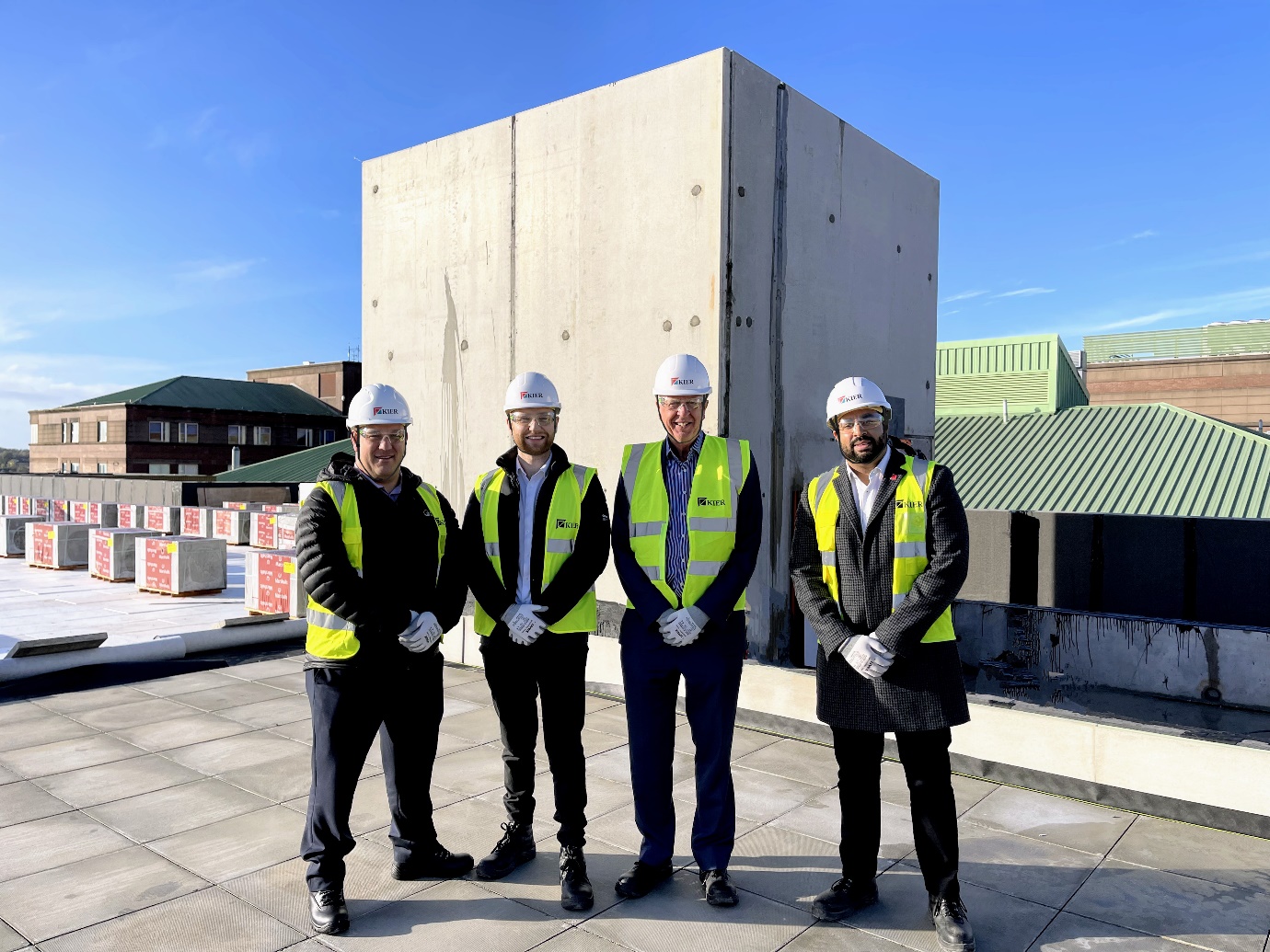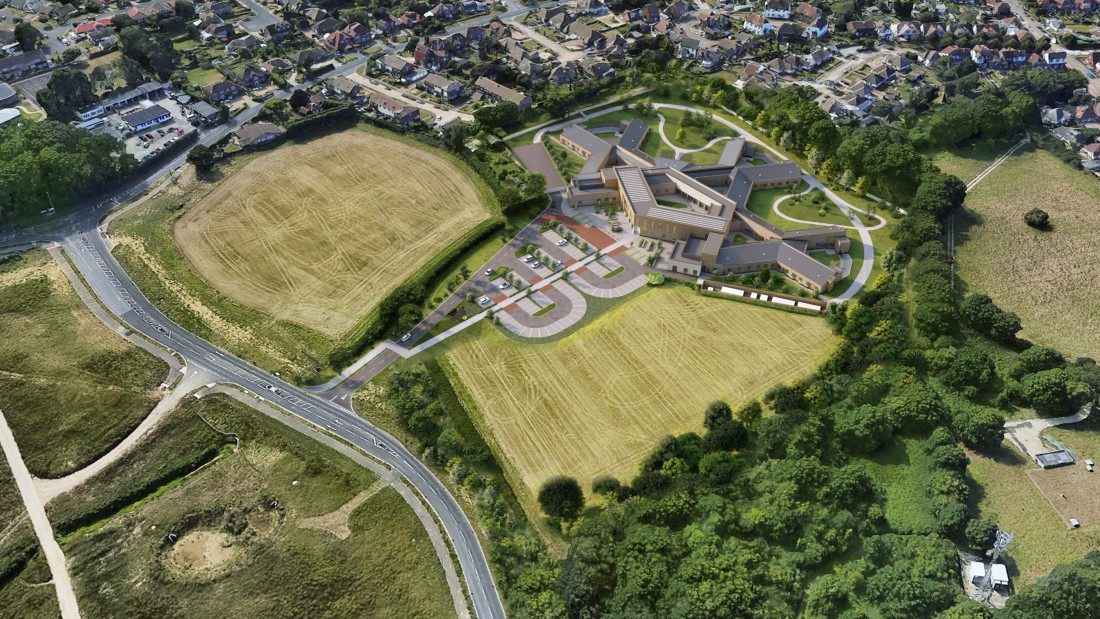Taking over as Health Sector Director in January 2024, Matt Griffiths now heads up all healthcare work across Kier Construction. Following over a decade working in the health construction sector, Griffiths is acutely aware of how big this new responsibility is. "The next decade in healthcare will be a defining one,” he says.
Explaining that collaborating to solve challenges will be critical in this period, Griffiths acknowledges that “we’ll have to do all of this whilst balancing value for money in a world where costs are increasing and putting pressure on budgets.”
For Griffiths and Kier, this involves leaning on all local teams in Kier’s network. “Now that I am leading healthcare nationally at Kier, my aim is to further increase consistency between our regions. Where there are pockets of innovation or efficient new ways of working, we are applying this learning to all health schemes, in turn providing even better value for the Trusts.”
“I am always looking ahead to ensure we have the solutions our clients need to design and construct buildings that are futureproofed and flexible,” Griffiths explains.
Problems to fix
When talking about creating efficiencies in healthcare, Griffiths says there are three main points he is trying to tackle; driving down energy use, pushing up productivity and unlocking efficiency through digital innovations.
These are all important aspects to integrate into a new healthcare build. Prioritising these is a must. This is what Griffiths is aiming to do with the new “programmatic” approach to project building.
Griffiths explains that a programmatic approach means using the repetitive nature of the healthcare design and construction process to drive efficiencies.
The New Hospital Programme (NHP) is a prime candidate for this approach
This approach requires all local teams in the network to have a consistent framework, components, and expertise to produce the specific building needed for that Trust on that site.
Griffiths explains that in his department they have over 50 schemes either in design or live on site. “Aesthetically and functionally, these schemes may be very different, but the process that moves them forward and the components needed to build them can be identical.”
“We have some very large and complex schemes on site in Luton, Sussex, Taunton, Glasgow, and Sunderland, with more coming through preconstruction,” Griffiths adds. “[This] combined scale represents a massive opportunity for all other smaller value schemes across Kier to benefit.”
The New Hospital Programme (NHP) is a prime candidate for this approach. The New Hospital Programme was set up in 2020 to build 40 new hospitals in England by 2030. It has £3.7 billion in capital funding for this for up to March 2025, with more to be provided for the following five years.
Collaboration is such an important part of the programmatic approach
Griffiths explains that the NHP is adopting this approach well, emphasising consistency, economies of scale, efficiency and continuous improvement.
Collaboration is such an important part of the programmatic approach. Griffiths also has experience creating partnership schemes to find synergies between multiple parties, similar to the programmatic concept. He developed a Consultant Partnership Charter to maximise collaboration and has developed initiatives to help drive The Construction Playbook, including the Modern Methods of Construction (MMC), Low Carbon and Social Value agendas.
Consistent application of MMC and energy-saving techniques are just some of the ways a programmatic approach can aid a whole region.
The importance of knowing your client
Realistically, carrying out this programmatic approach on the national scale requires a lot of specific relationships, however.
Griffiths has worked with many Trusts in different capacities over the years. Based in Bristol, he has long-term relations with many of those in the South West and Wales and beyond. In his prior preconstruction lead roles at Kier, Griffiths played a key part in several complex healthcare schemes for Royal United Hospital, Neville Hall Hospital, and even the famous Bristol Nightingale Hospital, which was created in 20 days during the COVID-19 pandemic.
These projects are of huge significance to Griffiths’ career and his industry relationships, but what was almost more influential was his time working at a hospital in Birmingham as a housekeeper during his sixth form days. “I worked some evenings and weekends cleaning wards, ICUs, or outpatients’ departments. On some occasions I would even be asked to step over to support catering on wards,” he explains.
I spent a lot of time talking to patients who were there long term
Griffiths explains that this time embedded in him the inner workings of the NHS and how hard the staff work, how exceptional they are, and how they rely on the building and rooms to support them to do their work effectively.
But there was a flip side to this dedication and excellence. The Health Sector Director explains that in his time as a housekeeper, he saw many services that were not effective and were in clear need of modernising. “I also spent a lot of time talking to patients who were there long term,” he says. “For them yes, the building was critical, but more important was the personal connection the staff, including myself, were able to give when they can work efficiently. This left with me a passion to want to do something about it from a building perspective, but never forgetting it is all about people.”
But who is your client?
On the topic of relationships, Griffiths brings up the unique nature of “stakeholders” in healthcare projects. He says that these are so “wide-reaching” and he must actively engage them all for the best outcome for patients.
“The NHS itself has multiple interested parties, from capital projects to estates, facilities, infection control and of course patients, to name just a few,” he explains. “Everyone involved in the project has a key role to play in ensuring that the outcome is welcomed by all of these stakeholders and our role as contractor puts us at the centre of this.”
So you are serving a lot of masters in these projects and Griffiths explains that to keep on top of this, pre-planning and engaging stakeholders early is what truly creates cost and time efficiencies.

Frameworks for early engagement
Kier is part of many national and local frameworks that provide services to the NHS. Unsurprising as the company has delivered almost every type of healthcare building possible, as Griffiths notes.
Outside of connecting a client with the most appropriate contractor, these frameworks create a community to allow for collaboration between the selected parties.
“Kier is always proud to be at the forefront of framework working groups in healthcare as we believe in the power of open and transparent collaboration for the greater good,” Griffiths explains.
Again, he emphasises the importance of consistency across all the Kier teams, in line with the programmatic approach for the best functioning of these frameworks. “The aim of my team is then to ensure that this knowledge and learning is disseminated and absorbed by our regional teams so that all our healthcare clients across the UK benefit from the improvements that the frameworks are making.

What’s on Griffiths’ playbook?
“My first few months in post have given me a wider perspective across all of Kier’s healthcare work and have made me even more proud of what we do here at Kier,” Griffiths enthuses.
With budgets under pressure and construction costs at an all-time high, the road in front of Griffiths is not an easy one. However, he remains passionate and determined. “I am already impressed by how Kier’s local teams are rising to the task,” Griffiths says. He explains that his focus is now on getting out there to continue to see all of his regional health teams, to listen and learn from them. He is giving attention to, as he calls it, the “unique” nature of healthcare stakeholders, by trying to build even better communication channels with the country’s Trusts, as well as Kier’s consultants and supply chain. “We would be nothing without them,” he says.
Between building relationships and building consistent approaches, Griffiths is reinforcing the Kier healthcare team from the ground up to head into perhaps the most defining years for healthcare in a generation.

